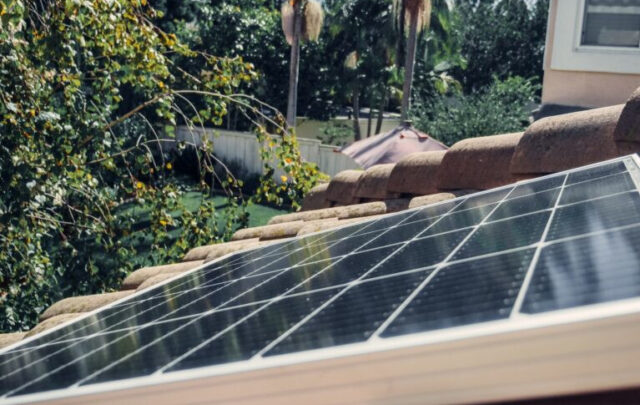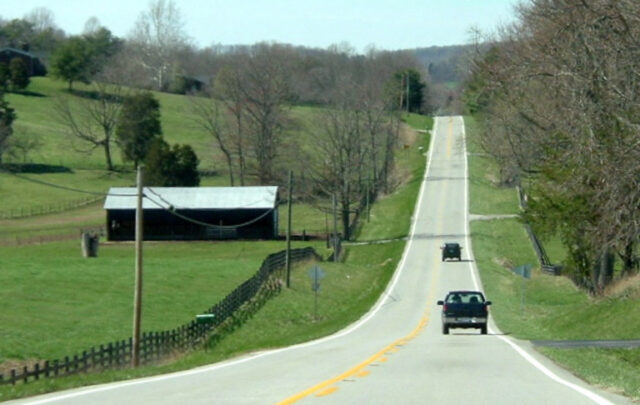I think it’s about time I paid my next visit to the Peasant’s Republic of Wessex. But first, news of another publication from the Small Farm Future stable – a piece entitled ‘Why Britain should protect and cherish its small farms’ published by the insurance arm of everybody’s favourite farming union, the NFU. When asked why the tone of the article was more moderate than that usually to be found here on this website, Small Farm Future CEO Chris Smaje replied, “Because NFU Mutual pay better than the punters on this blog. Though, since you mention it, the donate button is…oh, you know where it is. Next question.”
Anyway, let’s get back to Wessex. On my previous voyages there, I’ve learned that the republic’s population – some 20% higher than the region’s current one – can provide for their food and fibre needs using organic methods and tractive agricultural energy from home-grown biogas. Which is quite something, I think. But agricultural energy is the easy bit. Can the republic provide sustainably and indigenously for its wider energy needs?
To answer that question, it’s necessary to define both what sustainable energy production might look like and what the population’s energy needs are. On the first point, I guess I’d say that it really ought to be a low carbon source, which pretty much rules out any kind of fossil fuel. Ideally it would also have to be locally available and at a cost appropriate to a substantially agrarian society, but I’ll come on to that soon. It’s possible of course that by the time the Peasant’s Republic of Wessex comes into being circa 2039 there’ll be a whole new generation of hitherto unheard of clean energy technologies available. But I don’t think we can count on it. As a starting point, then, I propose to look at how much energy we can produce locally from existing renewable technologies.
To address the issue of how much energy we need – well, no doubt we could debate that endlessly. Let’s start by looking at how much energy we use currently – and the answer is 2.85 kW per person directly consumed in the UK (and, I shall assume, in its Wessex subdivision). Or, to put it another way, something like a domestic washing machine rattling away on its full power usage day and night, year-round for each and every one of us.
Can renewables realistically furnish us with that level of energy? I think there’s a clear answer to that: no. We often get excited about the possibilities for generating electricity with renewables and perhaps with other low-carbon technologies like nuclear, but we tend to forget that electricity only constitutes about 10% of our total energy use. Currently, fossil fuels power a good chunk of our electricity production and the vast bulk of all our other energy usage. I think it’s realistic to replace existing non-renewable electricity generation with renewables. I don’t think it’s realistic to replace the entire energy economy with them, barring some major technological breakthroughs.
So if we’re going to have a hope of a sustainably-powered Wessex we’re going to have to make some energy cutbacks. Let’s take a look at where the energy is used currently in the UK and see where we might wield the knife.
This is displayed in the pie chart below. The largest component of our energy use is transport, of which the largest component is domestic transport (at 20% of total energy usage), with 9% devoted to air travel. So there’s the easiest initial hit – I can’t really see much of a role for aircraft in the Peasant’s Republic, except perhaps for a few scientific and meteorological drones and the odd air show to remind us of more profligate times, so I think we can lop 9% off our total usage straightaway. It’ll be a fillip for the tall ships industry that used to thrive here in the west country.
Personal domestic transport looms large amongst the rest of the transport energy use. I think we can trim that pretty savagely. Farmers are never that keen to leave the farm anyway, and we can try to beef up rail and bus services a little. So let’s reduce car journeys by 80%. Now we’re getting somewhere. Or perhaps in fact we’re not getting anywhere much. But maybe if electric cars catch on, the 80% reduction in energy won’t have to correspond to quite such a dramatic fall in actual journeys.
A lot of commercial transport energy is devoted to transporting food, which will be locally available in the republic, so I think we can make some savings there. It’s often said that long-distance commercial transport has a low energy cost, which is true and is reflected in the figures here. But it’s still higher than if you don’t transport food long distance at all, so I’d suggest that some savings can be made. Besides which all sorts of frivolous items get freighted around these days. Hell, there’s no time for all of that on the farm. So I propose that we can cut commercial transport energy by at least 30%.
The next hungriest energy user is people’s homes, which command 29% of total usage – mostly in the form of space and water heating. My proposal is that we can reduce this by about 60% – firstly by investing properly in retrofitting insulation for older properties, secondly by using more efficient combined heat and power stations for energy supply (which lend themselves well to renewable feedstocks) and thirdly by using pricing structures and general exhortation to encourage people to conserve hot water, turn the thermostat down and just put a bloody jumper on if they’re cold. Investing more in solar hot water systems may also be a good idea.
We now come to industry, which uses about 17% of total energy. At 23,600 ktoe nationally, this is only about 40% of the industrial energy the country used in 1970. The improvement partly comes from the fact that industry now produces about 17% more product per unit of energy input than it did fifty years ago, but mostly from the fact that Britain no longer has a significant mining, steel, car or shipbuilding industry as it did in 1970, and so now effectively imports a good deal of energy in the form of industrial products bought from abroad. On the other hand, in 1970 Britain’s heavy industry was to some extent an export industry, and given the agrarian nature of the People’s Republic of Wessex (many fewer fancy cars, remember) the need for 1970s levels of industrial production is debatable. So it’s difficult to determine an appropriate figure for industrial energy use. My proposal is to leave it exactly at its present value.
To give an idea of what that might look like, I’ve plucked some figures for the energy embodied in various materials from the internet and constructed the following table to indicate the sort of material resources that an abstemious farm household might use. The table shows, for example, that a four person household might have five tonnes of wood in their farmhouse and associated buildings, which they’d expect to last for 25 years. And so on down the list, including a 2 tonne tractor to furnish their own needs and that of forty-odd customers for 40 years (my own tractor has another three years to go before celebrating its 40th birthday), and a car or small van shared between two households (which, as it turns out, has by far the heaviest energy take). Perhaps some of these materials could be recycled at the end of their expected life, but I haven’t taken that into account.
Table: Lifetime embodied energy costs
| Emb. energy (MJkg-1) | Mass (kg) | Users | Expected life (yrs) | Energy use per person per year (MJ) | |
| Wood | 2.3 | 5,000 | 4 | 25 | 115 |
| Plastic | 13.8 | 10 | 1 | 1 | 138 |
| Glass | 32.3 | 50 | 4 | 25 | 16 |
| Steel (tractor) | 55.30 | 2,000 | 50 | 40 | 55 |
| Steel (car) | 55.30 | 1,300 | 8 | 12 | 749 |
| Total | 1,074 |
At about 1,100 MJ per capita, the direct usage figures assumed in the table for the Wessex population constitute about 7% of the total industrial energy budget I’ve construed of 23,600 ktoe allocated out on a per capita basis (apologies for jumbling up the units – I blame my data sources). Obviously, the industrial energy budget also needs to supply various intermediate goods, including the replacement of stock, and public goods as well. Is the 93% margin here sufficient to cover that? I’m not sure – I’d be interested in other views. I think it probably is. Indeed, perhaps these figures suggest the industrial energy budget could be trimmed a little. On the other hand, maybe we should allow our household a bit more plastic, a few more trinkets…my vote as an organic grower would be for extra Enviromesh.
The final component of the total energy budget is services, constituting 14% of total energy. A mere 6% of this services component is devoted to agriculture, which just goes to show how relatively energy-light providing food is. The other main components are retail (19%), warehousing, hotel/catering, and education (all 13%). I’m figuring we can make a few savings on the shops, warehouses and hotels – so I propose to reduce the services budget by 25% overall.
If we trim energy use in the manner I’ve described above, we can reduce per capita energy use in the Peasant’s Republic of Wessex by a little more than half its present value – down to around 1.3 kW per capita.
Now that we’ve got energy demand down to something halfway sensible let’s look at what methods of generation are available and see if we can meet it.
To start with, we have about 700,000 hectares of woodland that could be managed for fuelwood in Wessex, comprising the woodland areas on the neo-peasant holdings, woodland edges on field boundaries and non-farm woodland. Assuming a sustainable yield of 3 tonnes of fuelwood per hectare per year, that gives us just under 50 GJ of fuel energy per hectare – or about 8% of our total energy requirement. Some way to go!
Well, we can throw in the biogas from silage anaerobic digestion that I looked at in a previous post – that gives us another 6%, and every little helps.
Looking at current sources of renewable energy provision in the UK there are a few other relatively minor sources we can add – biogas from human sewage, energy from waste combustion (which I’ll assume will be half its present value, as I think there’ll be less waste in Wessex), geothermal heat (too expensive, I’d think, to significantly expand on present values in Wessex), and wave/hydro energy, which I’m assuming we could at least double (see further comments below). Adding all that together, we get another 4% of our total requirement.
Turning to wind energy, the UK is well provided with wind although it currently only furnishes about 3% of our total energy use. This is partly because of government foot-dragging, but also because of the huge dominance of fossil fuels in the overall energy mix mentioned above. I’m not convinced that the massive expenditures and engineering feats required of offshore wind installations will be feasible in the Peasant’s Republic of Wessex (there are no major offshore wind installations in the southwest at present), but onshore wind is another matter and is now relatively cheap. I think it should be possible to expand onshore wind tenfold in Wessex from the current per capita level for England (a lesser figure than the UK as a whole, which is inflated by high levels of wind energy in Scotland) – in which case we could furnish about 17% of the energy requirement from wind.
Totalling what we’ve got so far takes us to just 36% of our (already greatly trimmed down) energy requirement. At this point my hands get clammy and an insurgent thought pops into my head: “Oh my God – the ecomodernists are right. Renewables are a delusion! We need to go nuclear.” Well, let’s at least look at a nuclear option. After all, the current government has, in its wisdom, chosen to build a huge new nuclear power station in the heart of Wessex, not forty miles upwind of where I now sit. Hinkley C is projected to produce 3.2 GW of power at a minimum cost of £30 billion all in. If it’s built, I doubt we Wessexers will be able to keep all that energy to ourselves, so let’s allocate it out to the UK population on a per capita basis. And if we do that we’ll add, as a maximum, the grand total of 4% to meeting our energy requirement.
I guess you could argue that nuclear isn’t as limited by space and natural energy input considerations as other low carbon forms of supply, but at £10 billion+ per gigawatt – plus decommissioning costs and various other downsides – I’m really not sure how well this stacks up. You could argue that after the capacity-building exercise of Hinkley, future installations will be cheaper. Or, after watching EDF scrambling around and potentially bankrupting itself in its bid to build Hinkley, you could argue that in the context of a chronically sluggish UK economy, Hinkley probably won’t get built, and even if it is there won’t be any more Hinkleys after that. Phew! The ecomodernists are wrong after all – we greentards can rest easy.
Another grand option would be a tidal barrage across the River Severn. Going the full monty on this could furnish about 10% of our energy requirements. But it’d be another massive and prohibitively expensive engineering project. The Severn is a handy and scandalously underused bit of local topography for energy generation, and I’m sure there’d be scope for getting something from it with more modest schemes (as very conservatively projected above), but perhaps – like the government – we should leave big tidal projects on the back burner for now.
The other main way to go, as mentioned in an earlier post, is photovoltaic electricity. Suppose we put 15m2 of PV panels on the roofs of Wessex’s 3.15 million-odd households (the panels wouldn’t necessarily have to go on every roof – perhaps we can just imagine 15 m2 x 3.15 million = 4725 hectares of panels on brownfield sites generally). Assuming a yearly energy input of 5.4 Wm-2 that would give us about 30% of our energy needs. Well, we’re beginning to get somewhere now, but we’ve still only met 66% of our needs. Maybe we could meet the rest of them by putting PV on farmland. We’d need about 54,000 ha, which we could take from our permanent pasture. We could run sheep on the solar farms, rather than dairy cows. I’ve seen it claimed that 95% of the grass on a solar farm is still accessible for grazing, but since photons can’t simultaneously energise both panels and grass, we’ll surely have to reduce the productivity of the grazing. I’ve been unable to find a figure for how much, but I guess there’s going to be a fair bit of incident and reflected light on the grass at different times of the day. So could we say 50%? On that basis, we can still feed Wessex’s population just about adequately and meet our energy target. It’s quite a PV dominated solution, with about 2.5% of Wessex’s land surface covered with panels (you could, I suppose, put them out at sea as Miles King suggests for a solar-hydrogen solution – though since the main enemy of PV panels is water, I’m not sure if this is such a great idea).
Of course, there’s an energetic cost to manufacturing and replacing panels – as indeed there is to all the other forms of generation. Assuming an embodied energy of 4070 MJm-2and a working life of 30 years, we’ll need to devote 8% of the energy allocated to industry to panel manufacture. Sounds doable?
Well, there you have it. It looks to me like the Peasant’s Republic of Wessex might just about be able to get by with a tight but tolerable per capita energy availability. There’s probably too much reliance on PV in the model I’ve outlined above in view of problems like intermittency. I think this can be overstated, and there are various evening-out technologies in the pipeline – but in the meantime, it’s probably best if we Wessexers aim to do our smelting and welding in the summer. Countries that, unlike Britain, aren’t stuck in a permanent swirl of cloud somewhere not far from the North Pole may find the PV approach more congenial.
There are other possibilities like crop biofuels. The issue here is competition with food crops (and lower per hectare energy output) – possibly remediable with such emerging technologies as algal biodiesel. Ultimately there are a set of rather complex tradeoffs between energy descent measures, energy cost per joule, energy productivity per unit area, embodied energy costs and various specifics such as engineering complexity, decommissioning costs etc. It looks to me like they might be resolvable – just – through a mix of solar, wind and tidal energy with some biofuels thrown in and strong downward pressure on usage. What seems to me more likely in practice is that the government will persist with a high energy route of fossil fuel and nuclear with a smattering of renewables until it runs out of road. Well, never let it be said that Small Farm Future wasn’t here pointing it towards the path of righteousness…







